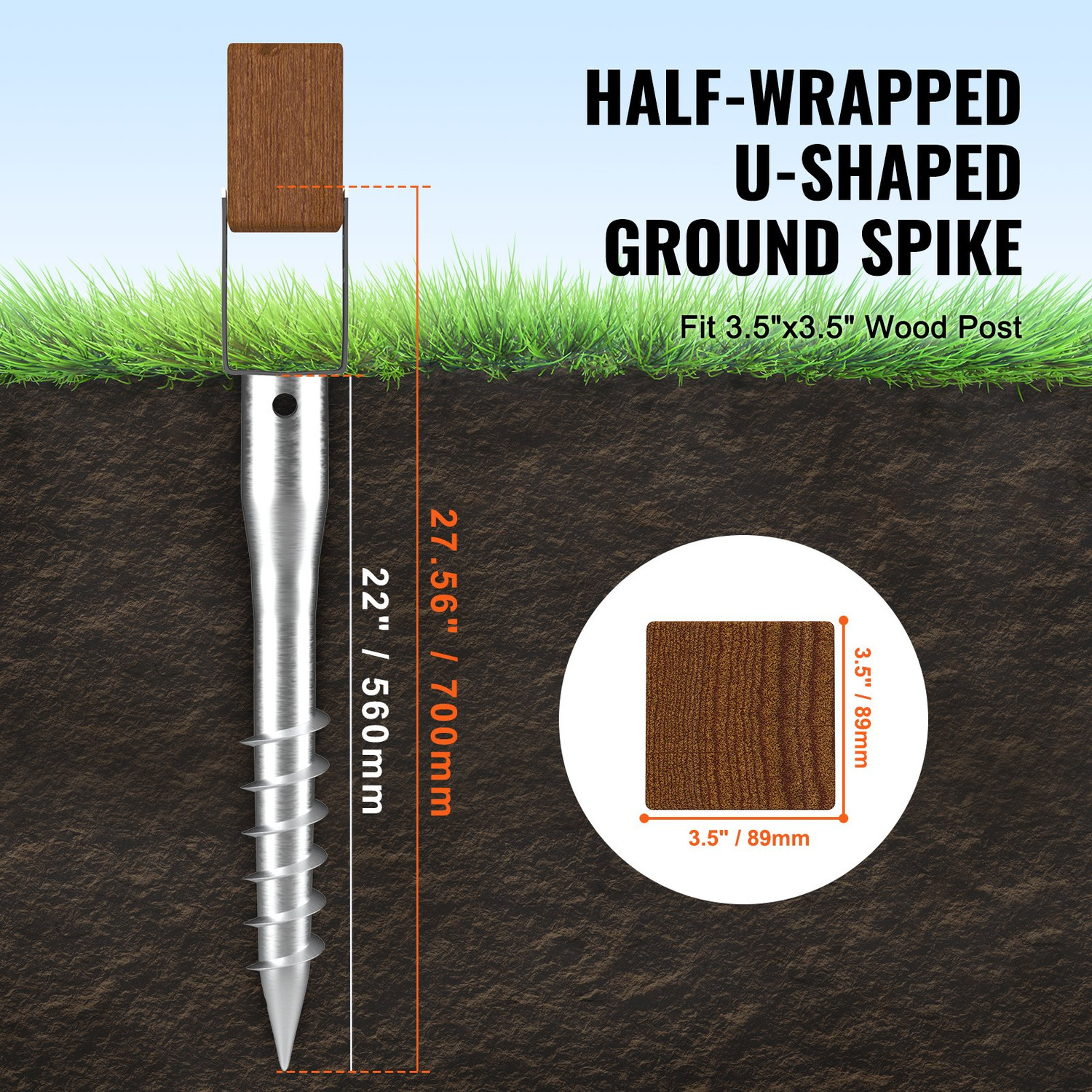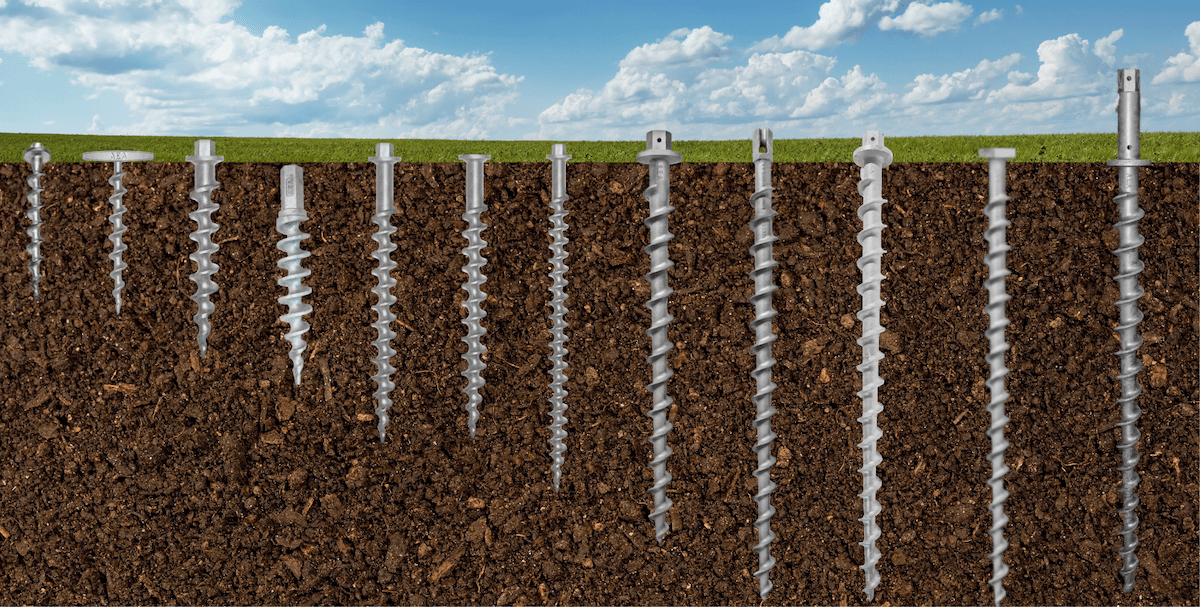How Heavy-Duty Earth Anchors Work: A Comprehensive Guide to Dirt Anchoring Solutions
Durable Earth supports play an important function in offering stability and support in numerous building and construction applications. By installing deeply into the ground, they resist vertical and side pressures effectively. Various kinds of supports deal with different soil problems, making them versatile. Comprehending their auto mechanics and installation strategies is crucial for making best use of efficiency. What elements influence their efficiency, and just how do they contrast to conventional approaches? The solutions may amaze you.
Recognizing Durable Earth Anchors
Sturdy Earth supports act as crucial components in different construction and landscape design projects, offering stability and support in challenging dirt problems. These supports function by being embedded right into the ground, where they resist upright and side pressures. Their design permits protected add-on to structures, guaranteeing they continue to be anchored versus soil movement or outside loads.The performance of heavy-duty Earth supports greatly depends on the sort of soil and the anchor's installation deepness. Correct installment strategies are crucial, as they determine the anchor's holding capacity. Environmental factors, such as moisture and freeze-thaw cycles, can likewise influence performance.These anchors are often used in applications varying from protecting fences and keeping walls to stabilizing short-term structures during unfavorable climate condition. Comprehending the principles behind heavy-duty Earth supports is important for experts looking for to improve the sturdiness and safety and security of their projects.
Sorts Of Heavy-Duty Earth Anchors
Different sorts of heavy-duty Earth anchors are designed to fulfill certain requirements based upon dirt conditions and project requirements. Helical anchors, featuring screw-like blades, are efficient in softer soils, providing high tons capabilities and easy setup. Driven supports, which are hammered right into the ground, are suitable for rough surfaces and provide instant tons support. Tie-back supports are typically used in keeping wall applications, permitting for lateral support by anchoring right into the ground at an angle. One more kind is the cast-in-place support, suitable for concrete applications, as they are incorporated right into structures for boosted stability. Soil screw anchors are functional options that can be utilized in various dirt kinds, providing trusted stress and compression abilities. Each kind offers unique applications, guaranteeing security and safety in building and landscape design tasks. Recognizing these choices enables educated decisions in selecting the ideal Earth anchoring service.
The Mechanics of Dirt Anchoring

Understanding the mechanics of soil anchoring calls for an assessment of various kinds of Earth anchors and their installation techniques. Each anchor type offers unique attributes that influence its effectiveness in different soil conditions. Correct installment techniques are essential for taking full advantage of the securing system's security and efficiency.
Kinds Of Earth Anchors
Earth supports, crucial components in soil anchoring systems, come in several types, each created for details applications and dirt problems. One of the most typical types include screw supports, which are twisted into the ground, providing solid side resistance. Helical supports include blades that permit for reliable installation in various soil types, making them suitable for both irreversible and temporary applications. Driven supports, generally made from steel, are inculcated the soil and are reliable in rough or thick environments. Auger anchors utilize a helical style to assist in setup in softer soils. Lastly, plate supports include a level plate buried flat, distributing load over a bigger area, suitable for applications requiring high tons capacities in natural soils.
Installation Strategies Explained
Appropriate installation methods are important for the effectiveness of soil anchoring systems. The process typically starts with website evaluation, validating the selected location can sustain the anchor's tons. After determining the proper support type, correct hole depth and angle need to be established. The installment includes driving the support right into the ground using specialized devices, such as hydraulic or hand-operated motorists, to achieve ideal embedment. Post-installation, tensioning the support is essential to guarantee security; this is often verified with tons testing. In addition, bordering soil problems must be monitored to stop variation. Adhering to these methods not only improves the support's performance but also prolongs its lifespan, supplying reliable assistance for various applications.
Applications of Heavy-Duty Earth Anchors
While heavy-duty Earth supports are often connected with building and landscaping, their versatility prolongs to a range of applications across different sectors. In civil engineering, they give necessary assistance for preserving walls, guaranteeing stability in locations susceptible to dirt disintegration. The aquatic market uses these anchors for protecting anchors and marinas, preventing motion triggered by trends and currents. In addition, in the telecommunications industry, durable Earth supports are substantial for stabilizing cell towers and various other tall structures against wind forces. Agricultural applications also profit, as these supports can safeguard structures like greenhouses and animals secure fencing, guaranteeing they stand up to severe climate condition. Furthermore, in renewable energy jobs, such as wind ranches, Earth supports play an important duty in safeguarding turbine foundations, improving total security and performance. This wide range of applications highlights the flexibility and reliability of heavy-duty Earth anchors throughout different areas.
Advantages Over Traditional Anchoring Techniques
Typical anchoring approaches have long been relied upon for security, sturdy Earth supports supply considerable advantages that improve efficiency and performance. One significant advantage is their exceptional load-bearing capability, which enables them to endure greater pressures without failing. This strength makes them suitable for requiring applications, such as in construction and energy installations.Additionally, sturdy Earth anchors are made for deeper setup, providing higher stability in various dirt problems, including loosened or sandy dirts. Their resistance to corrosion and environmental factors assures a much longer lifespan and minimized upkeep prices compared to traditional methods.Moreover, these anchors can be installed with marginal click here to find out more disruption to the surrounding area, preserving the stability of the landscape. In general, sturdy Earth supports offer a effective and reputable option for securing needs, going beyond the constraints frequently connected with standard anchoring techniques.
Setup Refine and Finest Practices
The setup process for dirt anchoring options begins with extensive preparation and site evaluation to guarantee peak performance. Following this, a detailed installation overview supplies clear directions for effective application (heavy-duty earth anchors). Abiding by these best techniques is vital for accomplishing trustworthy and long-lasting anchoring outcomes
Preparation and Site Assessment
Effective prep work and thorough site analysis are essential action in the installment of soil anchoring remedies. Prior to installation, the dirt type must be assessed to establish its bearing ability and suitability for anchoring. Carrying out a geotechnical study can give crucial information concerning soil composition, dampness levels, and prospective ground movement. Furthermore, identifying existing frameworks, Look At This plant life, and utilities is important to avoid interference during installation. The location needs to be removed of debris and challenges to guarantee risk-free gain access to for devices. Weather should additionally be checked, as adverse conditions can impact both safety and security and setup effectiveness. By thoroughly preparing the site and reviewing all appropriate elements, the chance of successful anchor performance is considerably increased.
Step-by-Step Setup Overview
A comprehensive installation procedure is vital for attaining ideal performance of soil securing services. The setup starts with choosing the ideal anchor kind and assuring the website is clear of debris. Next, appropriate opening positioning is determined based on tons needs. As soon as the location is developed, openings are drilled to the defined depth and diameter utilizing the right tools. The support is then inserted into the hole, seeing to it it is straightened properly. After protecting the anchor, soil is backfilled and compressed to improve stability. It is vital to follow maker standards throughout the procedure. A post-installation assessment confirms that the anchors are properly positioned and working as planned, supplying trustworthy support for the intended application.

Maintenance and Evaluation of Earth Anchors
Normal maintenance and evaluation of Earth anchors are essential for ensuring long-lasting performance and stability. Routine checks permit the early detection of problems such as corrosion, loosening up, or dirt movement. Examiners need to search for indicators of rust or deterioration on the support elements, particularly at the link points. In addition, the surrounding dirt ought to be evaluated for disintegration or adjustments in dampness content, which can impact support effectiveness.It is recommended to develop a routine evaluation timetable, ideally at the very least yearly, depending upon ecological conditions. Throughout examinations, all noticeable parts ought to be cleaned up to eliminate dirt or particles that could hide possible issues. Any kind of signs of distress, such as tilting structures or unusual settling, should motivate instant evaluation. Correct documentation of examinations can aid in tracking anchor efficiency over time and assist in prompt upkeep activities, ensuring the supports stay reputable and practical.
Frequently Asked Questions
What Products Are Heavy-Duty Earth Anchors Typically Made From?
Sturdy Earth anchors are commonly built from resilient materials such as galvanized steel or stainless-steel, guaranteeing toughness and resistance to rust. These materials offer long-lasting assistance and security in different dirt problems and applications.
Just How Do Soil Problems Impact Support Efficiency?
Soil conditions substantially influence support efficiency. Elements such as dirt type, dampness web content, and compaction influence the anchor's grasp and security, with natural dirts frequently offering better resistance than loosened or sandy dirts, impacting overall performance.
Can Heavy-Duty Earth Anchors Be Recycled After Elimination?
Heavy-duty Earth anchors can be reused after elimination, supplied they are inspected for damages and wear. Proper cleaning and upkeep improve their long life, ensuring reliable efficiency in succeeding installations when conditions enable risk-free reinstallation.
What Are the Ecological Impacts of Making Use Of Earth Anchors?
The ecological impacts of using Earth anchors include potential soil disruption, disruption of local communities, and feasible contamination of groundwater. If used responsibly, their benefits often outweigh these issues, promoting stability in numerous applications.
Exactly how Do I Pick the Right Support for My Project?
